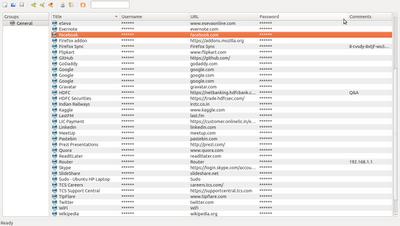Coursera had been picking up steam from sometime by offering online courses for free from different premier institutes ranging on a wide range of topics. Recently I found out that IIT's also had been doing a similar thing by posting Videos of some of the lectures on YouTube on a wide range of topics (Core Sciences, Civil Engineering, Computer Science and Engineering, Electrical Engineering, Electronics and Communication Engineering, Mechanical Engineering).
I went through the `Introduction to ANN` in the IIT YouTube Channel by Prof. S Sengupta and found it very useful. Here are some of the presentations related to Machine Learning. The Videos are a bit too long (~40 videos, 1 hour each on a certain topic), but are very good to gain indepth knowledge.
Design & Analysis of Algorithms
Artificial Intelligence
Neural Network and Applications
Natural Language Processing
Graph Theory
Regression Analysis
Core - Probability and Statistics -
Digital Signal Processing
Although IIT had been doing this for close to 4 years and covers a lot more topics than both Coursera and Udacity, they didn't get much attention. The oldest video I could get was around December, 2007 from IIT. This is way before than Coursera and others did some thing similar. Couple of things missing from the IIT team for wide adoption are
- Publicity of the IIT YouTube channel
- Ability to interact with the fellow students and with the lecturers
- Online grading system
which I don't think is very difficult to add on top of what already is existing. Definitely IIT seems to have interest and motivation in democratizing the eduction, since new Videos are being updated on a regular basis. More effort has to be put on the above mentioned items. One way is to get the help of the IIT students for the same.
Great work from IIT !!! All now someone needs is a computer with a good internet connection and a lot of motivation to learn.
I went through the `Introduction to ANN` in the IIT YouTube Channel by Prof. S Sengupta and found it very useful. Here are some of the presentations related to Machine Learning. The Videos are a bit too long (~40 videos, 1 hour each on a certain topic), but are very good to gain indepth knowledge.
Design & Analysis of Algorithms
Artificial Intelligence
Neural Network and Applications
Natural Language Processing
Graph Theory
Regression Analysis
Core - Probability and Statistics -
Digital Signal Processing
Although IIT had been doing this for close to 4 years and covers a lot more topics than both Coursera and Udacity, they didn't get much attention. The oldest video I could get was around December, 2007 from IIT. This is way before than Coursera and others did some thing similar. Couple of things missing from the IIT team for wide adoption are
- Publicity of the IIT YouTube channel
- Ability to interact with the fellow students and with the lecturers
- Online grading system
which I don't think is very difficult to add on top of what already is existing. Definitely IIT seems to have interest and motivation in democratizing the eduction, since new Videos are being updated on a regular basis. More effort has to be put on the above mentioned items. One way is to get the help of the IIT students for the same.
Great work from IIT !!! All now someone needs is a computer with a good internet connection and a lot of motivation to learn.





